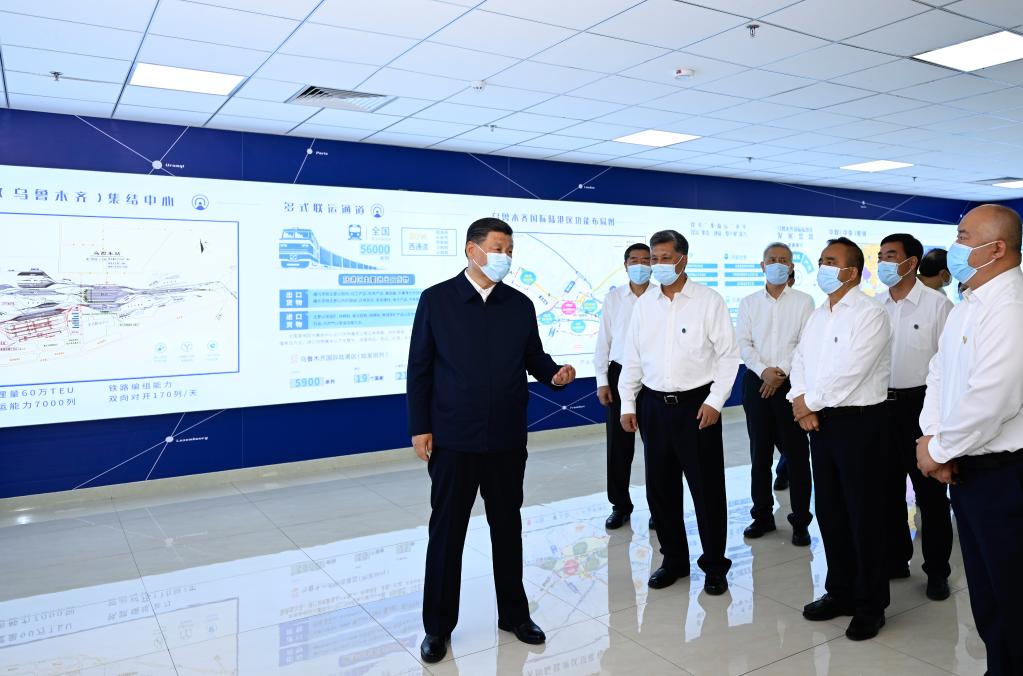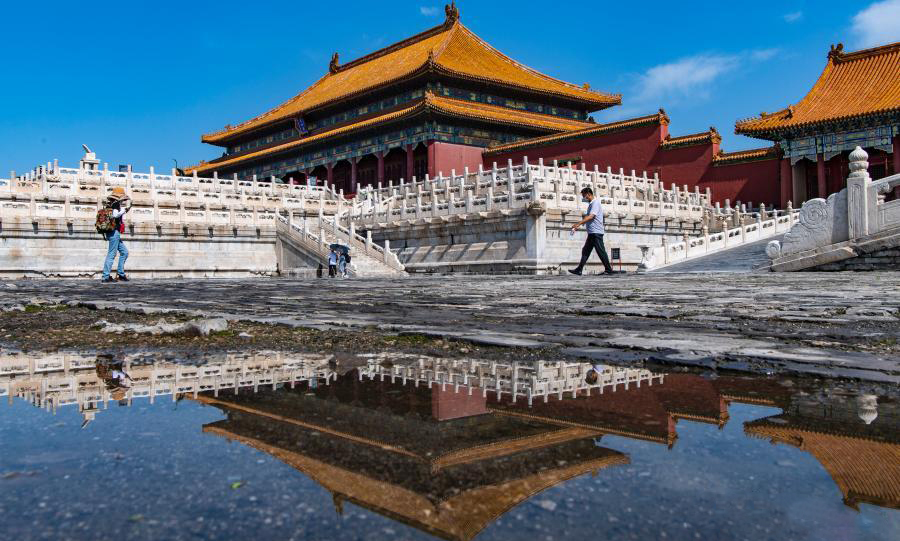Xi Focus: Advancing construction of Silk Road Economic Belt core area

Chinese President Xi Jinping, also general secretary of the Communist Party of China Central Committee and chairman of the Central Military Commission, visits the Urumqi International Land Port Area in the city of Urumqi, capital of northwest China's Xinjiang Uygur Autonomous Region, July 12, 2022. (Xinhua/Li Xueren)
URUMQI, July 16 (Xinhua) -- The Urumqi International Land Port Area in northwest China's Xinjiang Uygur Autonomous Region is well on its way to becoming an important growth pole powering the region's opening-up and economic development.
With a planned area of 67 square km containing the Urumqi China-Europe Railway Express Hub and a comprehensive bonded zone, the land port area stands as a landmark project in the construction of the core area of the Silk Road Economic Belt.
When visiting the Urumqi International Land Port Area during his inspection tour in Xinjiang from Tuesday to Friday, President Xi Jinping noted that Xinjiang has morphed from a relatively enclosed hinterland into the forefront of opening up, as the country is promoting the expansion of opening up, the development of the western regions, and the joint building of the Belt and Road.
Xi, also general secretary of the Communist Party of China Central Committee and chairman of the Central Military Commission, stressed advancing the building of the core area of the Silk Road Economic Belt and incorporating Xinjiang's regional opening-up strategy into the country's overall plan of westward opening up.
He highlighted the importance of innovating the system for an open economy, boosting the building of large opening-up corridors, better utilizing both domestic and international markets and resources, and actively serving and integrating into the new pattern of development.
Since its construction started in 2015, the land port area has absorbed over 30 billion yuan (about 4.44 billion U.S. dollars) in investment and attracted more than 340 enterprises. A cross-border e-commerce project has also been implemented there.
By June 2022, the land port area had operated more than 5,900 China-Europe freight train trips via 21 routes linking 26 cities in 19 European and Asian countries and regions. The trains carry over 200 categories of goods, ranging from daily necessities and garments to mechanical equipment and building materials.
The Belt and Road Initiative, which initiated a new prospect for China's opening up, has also provided unprecedented opportunities for Xinjiang, which is located at the heart of the ancient Silk Road.
Since the opening of the China-Europe and China-Central Asia freight train services, Horgos Port and Alataw Pass, both major rail ports in Xinjiang, have recorded a combined number of more than 50,000 inbound and outbound freight train trips.
Meanwhile, the country has established 55 national-level opening-up and industry development platforms in Xinjiang. These include the economic development zones of Kashgar and Horgos, which have created favorable conditions for promoting investment and attracting industrial clusters.
The region posted over 67.4 billion yuan in foreign trade value in the first five months of this year, up 30.9 percent year on year.
Photos
Related Stories
- Chinese Wisdom in Xi's Words: Study of history illuminates the way to good governance
- Advancing construction of Silk Road Economic Belt core area
- Xi Jinping's inspection tour of Xinjiang
- Xi stresses implementing Party's policies on Xinjiang, highlights stability, security
- Xi's article on advancing study of Chinese civilization to be published
Copyright © 2022 People's Daily Online. All Rights Reserved.









